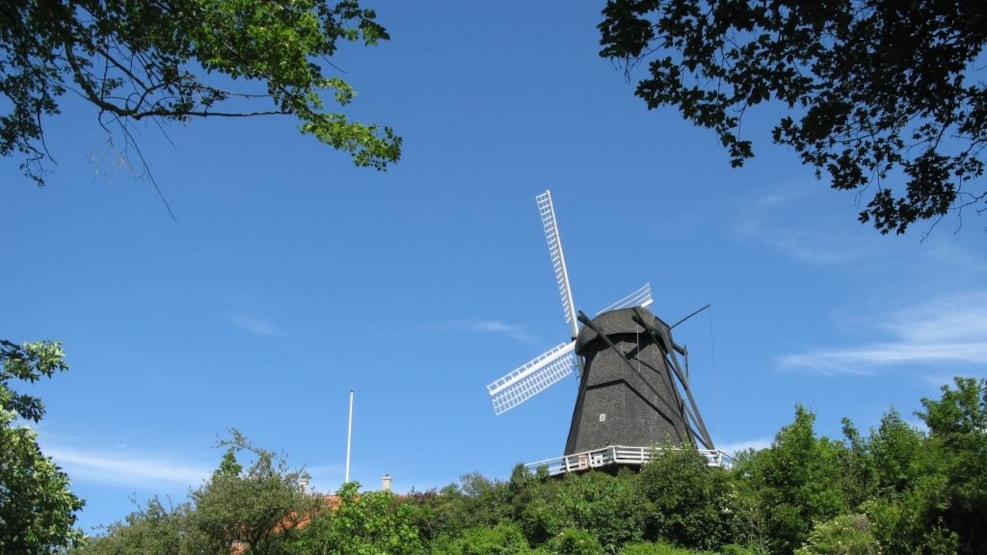
Rudkøbing Mill
Since the 17th century there has been a mill on Rudkøbing rampart.
NOTE: Rudkøbing Bymølle is currently undergoing major restoration work, which is expected to be completed in December 2024.
The history of the windmill
The windmill blew down in a storm in 1703 but was rebuilt as a stump mill. This mill was acquired in 1776 by Martin Jensen, an enterprising 37-year-old journeyman miller from Copenhagen.
In the years after 1790, several Dutch mills were built on Langeland, and in order to compete, Martin Jensen also sought a licence to replace his stump mill with a Dutch mill. However, he died before the licence was granted, and even though he had been so confident of getting the licence that he had already started buying materials for the mill, it was only completed after his death.
His widow married Johan Henrich Schnohr, a miller and millwright, and it is likely that he also built the mill, but this cannot be documented.
Little is known about the layout of this mill, other than that it had four grinders: 1 milk mill and 1 grist mill, both with Rhenish stones and 2 grinding mills (shell mills) with accessories.
It was typical of Langeland's oldest Dutch windmills that they had two shell mills - one with sharp plates for grits, and one with slightly blunt plates to shell the wheat before it was ground into flour (also called sharpening).
In April 1818, the mill burned down. It was rebuilt just over a year after the fire and was under construction for a long time.
The City Mill ca. 1880
The mill was first modernised in the 1880s and again in the 1920s, but business gradually declined.
In 1950, the wings and windmill were in such poor condition that it was decided to take them down. From then on, the mill operated solely by motor power until 1957, when operations ceased and the mill was donated to a self-governing institution.
The current mill was built with manual bending and sailing blades. It had 6 floors and was originally equipped with a flour mill, a slanting mill, a pebble mill (shell mill), a sieve, a grit screen and two ‘dust chests’.
IN N.C. Christoffersen's ownership (1879-1914) the mill was modernised. In the 1880s, he acquired a rolling mill, which seems to be identical to the one still in the mill. An auger front sieve and a modern centrifugal sieve were also acquired. A grinding mill with French millstones replaced the two old sieve mills, and the rye mill was doubled and fitted with a rye flour sieve with auger. These screens were replaced in the 1920s with an Ascania screen. One of the shell mills was replaced by a crushing mill for feed.
Around 1912, the windmill was fitted with a wind rose and self-winding (flaps on the wings). These features were not recreated during the later restoration. Today, the windmill stands with manual bending and winding as it was when it was built.
Source: Moelleforum.dk